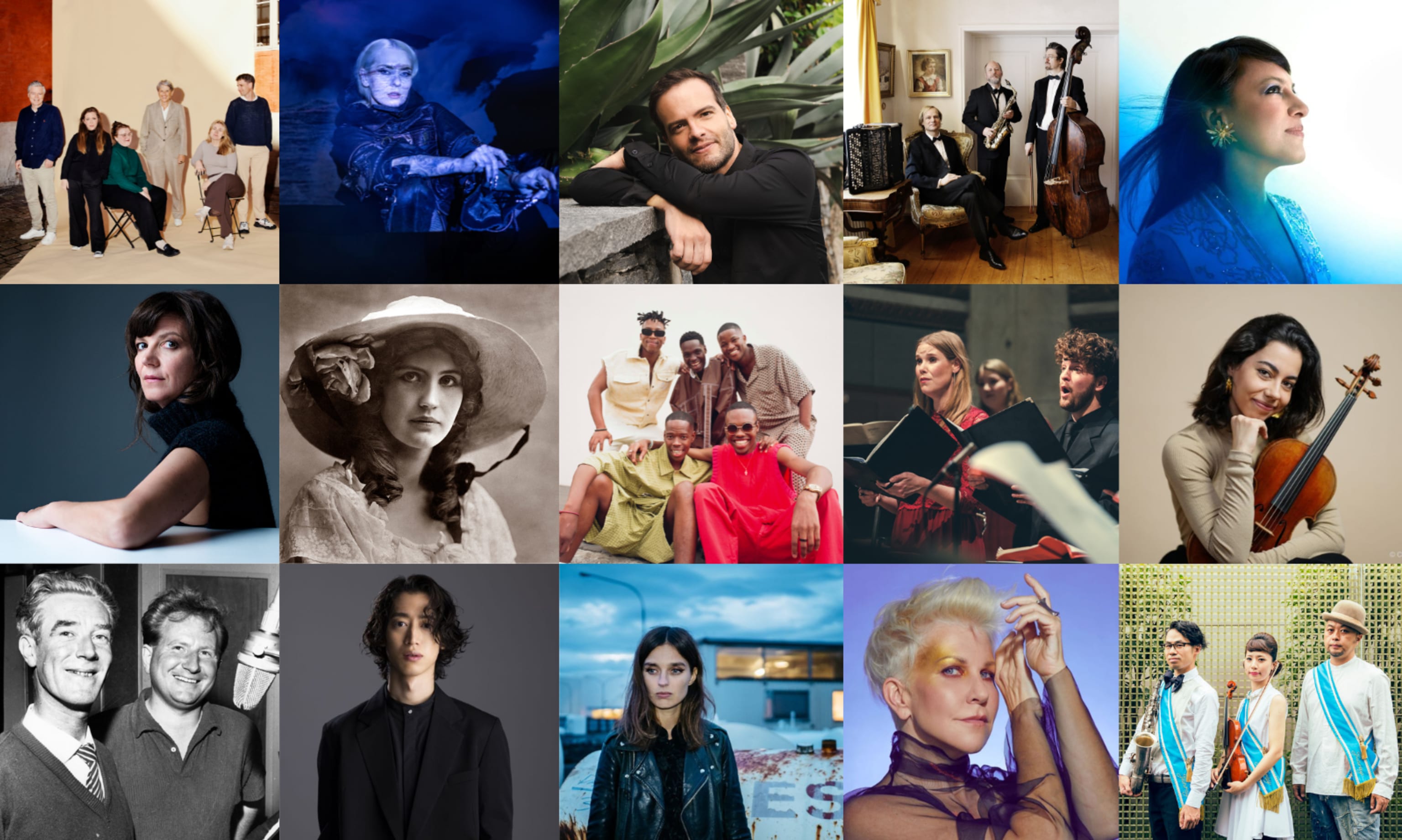Looking forward to Happy Days in Scandinavian
- Home
- Festival
- 2020-and-before
- Articles
- Looking Forward To Happy Days In Scandinavian
March 15, 2012
The artistic duo Elmgreen and Dragset has produced a performance reflecting their work, relationship and friendship, taking a sideways glance at the artistic world in which they live.
The premiere of Happy Days in the Art World was the opening performance of the New York Performa Festival last autumn. The Bergen International Festival presents a new version in association with the Royal Danish Theatre in Copenhagen.
According to Ingar Dragset the Danish-Norwegian performance will be a touch more direct and humorous’.
Casting of the two roles is currently under way.
Needed a break
Michael Elmgreen and Ingar Dragset have worked together since 1995, and over the last ten years they have attracted international attention with several of their pieces, such as the statue they recently unveiled in Trafalgar Square. The break-up of their partnership on a personal level did not mean the end of their career together, but rather the contrary.
‘Of course we went through a difficult period after having been a couple for ten years, but the friendship at the core of our partnership withstood the strain. We never divided up our CD collection – everything went into shared ownership in our Berlin studio,’ says Dragset, explaining that they have been concerned to give each other space to move on and develop further.
The duo experienced some particularly busy years after their break-up in 2004. The following year they were in Bergen with The Welfare Show, and in 2008 they returned with the animated Bergen International Festival opera L’Amour de Loin. After they had the responsibility for the Nordic Pavilion and the Danish Pavilion at the Venice Biennale in 2009, they realised they needed a short break after fifteen years of collaboration with practically no holidays. That was when they started work on Happy Days in the Art World.
Painfully realistic
‘I went on a three month tour of South America, taking with me a pile of books – new ones and others I wanted to re-read but never had time to. Amongst the pile was a collection of Samuel Beckett’s plays. Like many others I was fascinated by absurd theatre in my youth, but it was a wonderful experience to re-read Beckett twenty years on. Things felt more painfully realistic than for a young reader or theatre-goer,’ says Ingar Dragset.
He believes Beckett delves deeper by distorting reality, and particularly appreciates the humour.
‘Beckett was fascinated by the uncomfortably human and the embarrassingly touching, and there is plenty of crazy slapstick humour. I found parts of Waiting for Godot particularly amusing, since many of the dialogues reminded me of Michael and me talking together,’ he continues.
From South America he sent several Beckett excerpts to Michael Elmgreen, and they quickly agreed to use the recognition factor in some way. They first tried to put together selected highlights from various Beckett plays, but that merely resulted in what Dragset calls ‘post-modern idiocy’.
Social machinery
The artistic duo told Rose Lee Goldberg, the ‘grand not-so-old lady of performance art’ and director of New York’s Performa Festival, about their idea of creating an entire theatrical performance of a more or less personal kind based on Beckett’s dramaturgic devices.
She was sceptical at the outset, but they managed to convince her of the importance of breaking down barriers in the various genres and of making a completely different kind of self-portrait in theatrical style with references to their own and others’ visual art performances. To avoid the play becoming too narcissistic they sought advice on structure and dynamics from the British dramatist Tim Etchells, the artistic director of the theatre group Forced Entertainment.
Dragset points out that many of the people who saw the play in New York said that they recognised basic mechanisms and psychology from their own experience, though not themselves involved in visual art.
‘Since society is becoming more and more individualistic, everything is moving faster, and the demands that we should adapt to a media/education/social machinery are constantly growing, it seems important to me to stay still occasionally and ask ourselves what the f… we are actually doing,’ says Dragset.
‘Even though as a visual artist I feel quite privileged, working with what interests me most of all and to a great extent forming the pattern of my everyday life, I nevertheless adapt to being part of this machinery, and as time goes on there are quite a lot of things that influence me and disturb the dreams, ideals, ideas and visions I had when I started. For better or worse, of course.
Myths of the Artist
Both Dragset and Elmgreen worked in the theatre before defecting to visual art, and both are committed to being open to a variety of styles and genres.
‘It heightens your awareness and it is healthy not to get too comfortable with what you’re doing,’ says Dragset, who with Elmgreen developed the performance Drama Queens some years ago. Another play on the subject of myths about artists, it focused on positions in the twentieth century whereas it was important for them in Happy Days in the Art World to look at the present day.
Humour and recognition
A great deal of what was written with a New York audience in mind has been reworked in the Scandinavian script. The play has become more direct and there are fewer references to other artistry. The relationship between the two main characters and a humorous sideways glance at contemporary art are in focus.
‘Humour is a survival mechanism, and contemporary art needs all the glances it can get, whether sideways or straight. There is room for all – since the artistic arena can always be extended,’ Dragset points out.
English version Roger Martin






